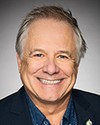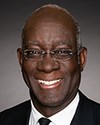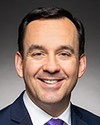Well, first, on the culture side of things, the armed forces are a multitude of small families from coast to coast that make this big family at the end of the day. The commissionaires are very similar to that. Veterans come with this understanding that teamwork is very important, that it is crucial. In fact, not only do veterans enjoy the environment, but non-veterans in our workforce become very accustomed to this way of thinking of things, looking at things and delivering as a team and not as an individual.
In terms of the number of veterans, as I said in my opening remarks, we have about 4,400, which is down quite a bit from what we had a decade or two or three ago, and as I said, there are reasons for that. However, we seem to have stabilized and we recruit about 700 a year. We knew we had this demographic bubble—that was recognized about 18 years ago—and that a lot of veterans were reaching retirement from us.
As an aside, when veterans join the corps, the vast majority will work for many years. In fact, about a month ago I celebrated a commissionaire who had just completed his 50th year with the commissionaires. That's after having served three and a half years in the military, and he's only 72 years old, so he's been working since he was 17 or 18. We have a recognition program, which is also part of our culture. We recognize employees. We recognize longevity. We recently launched a national program under which we recognize the best supervisor and the best guard across the country.
There are a multitude of things that create this environment that is very similar to the military. It's no big secret that the corps is led overwhelmingly by veterans as well, so we bring that to the table.




